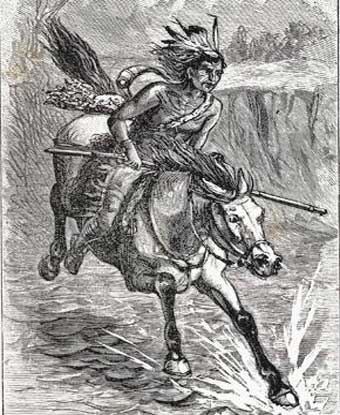Last updated: September 14, 2017
Person
William Weatherford

George G. Eggleston’s Red Eagle and the Wars with the Creek Indians (1878)
William Weatherford led the Red Stick Creek attack against Fort Mims on August 30, 1813, thereby transforming a civil war among the Creek Indians into an American war of retaliation against the Creek Nation. The successful attack by some 700 Red Stick Creeks quickly overpowered the Mississippi Territorial volunteers stationed at the hastily prepared fortifications around the home of Samuel Mims, where American settlers and a sizeable number of Creek families had gathered for safety. The Creek combatants killed not only the defenders, but many of the civilians who had taken refuge there. The estimated death toll was 250, with over 100 women, children and enslaved African Americans taken as prisoners by the Red Sticks. News of the “massacre” spread quickly, leading to American determination to destroy the military power of the entire Creek Nation.
Weatherford, a member of the Wind clan from the town of Coosada, was from a prominent Creek lineage and was raised in a bicultural family whose wealth and authority extended from the Creek towns to the growing settlements in the lower Alabama River, where Fort Mims was located. Most of his immediate family opposed the Red Sticks, but his Creek wife’s extended family did not. Following the attack on Fort Mims, Weatherford continued to lead Red Stick forces, and was among those who established the fortified village site of Econochaca or “Holy Ground.” In late December 1813, Weatherford and his forces defended the inhabitants against General Ferdinand Claiborne and his army of regulars, territorial militia, and Choctaw Indians. Weatherford and a handful of warriors famously held off the assault until the civilian population was evacuated and then escaped by riding his horse off a high river bluff into the Alabama River.
After the war, he was protected by his powerful family and lived among the white settlements in the lower Alabama River, seemingly taking no part in Creek tribal affairs. He is popularly known as “Red Eagle,” a name that first appeared in a poem by A. B. Meek, published in 1855, that presented a highly romanticized version of Weatherford’s life.
